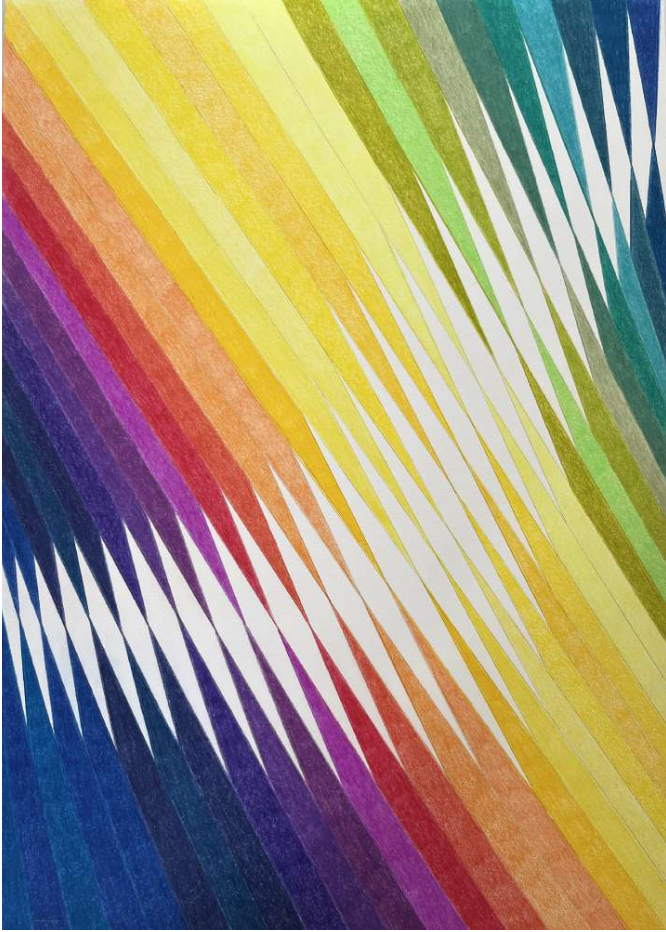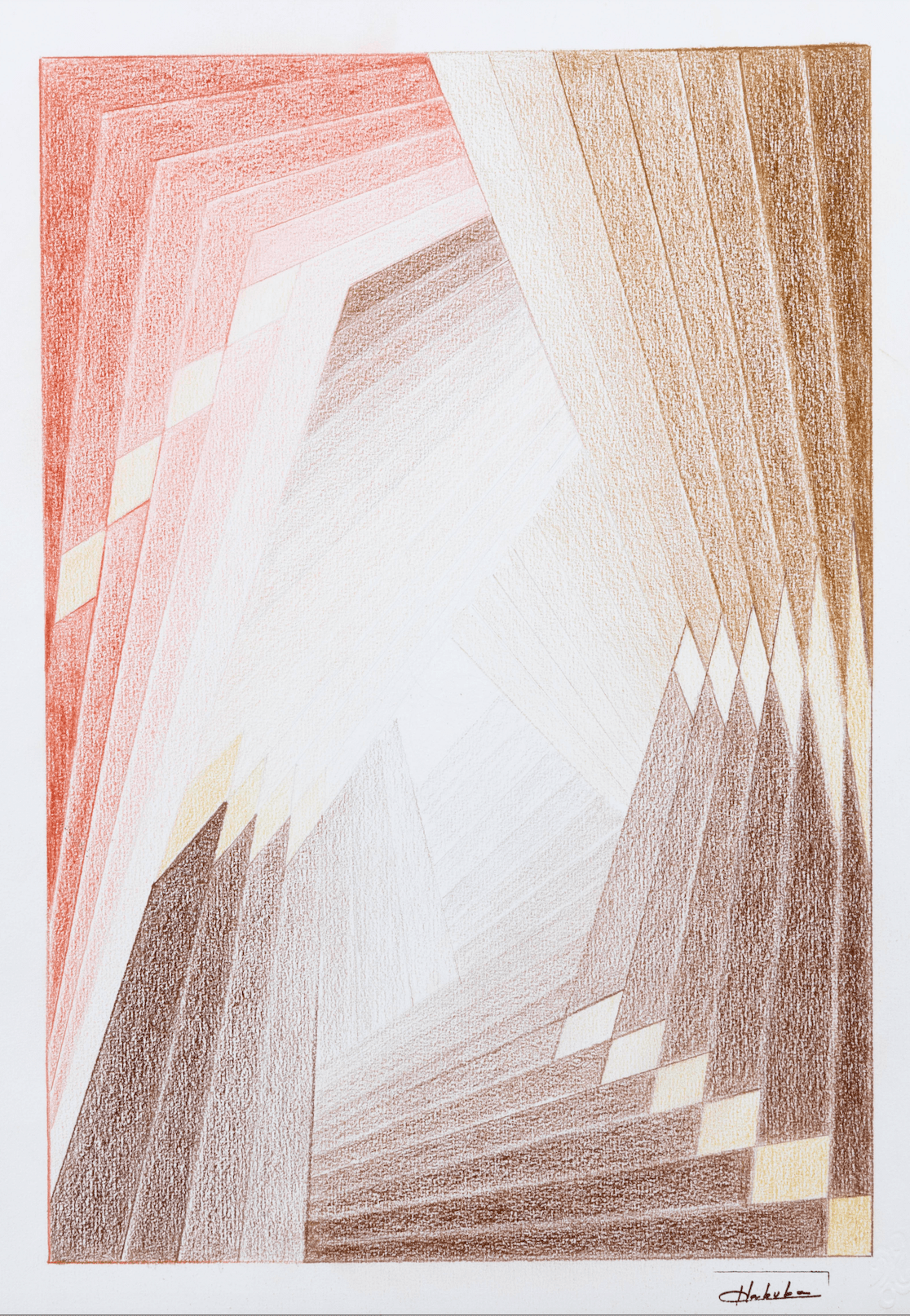Born in 1931 to a family of Lebanese immigrants who had settled in Brazil, Habuba Farah grew up straddling two cultural worlds, Arab and Brazilian, and from this intersection emerged a distinct artistic vision. In the vibrant São Paulo of the 1950s, she immersed herself in a blossoming avant-garde scene. It was there that she encountered the studio of Samson Flexor, a key figure in geometric abstraction. His influence shaped her early trajectory, but Farah’s path quickly evolved beyond imitation. She began crafting a unique language rooted in radiant color, architectural form, and an ever-present sense of motion. Her canvases became spaces where geometry was not a constraint but a kind of breath, where lines moved like phrases in a musical composition.
Her career, remarkable in its longevity and unwavering in its integrity, carried her to exhibitions across Brazil, Europe, North America, and Asia. In each context, Farah reinterpreted the core elements of her practice, form, rhythm, balance, without ever losing sight of the intuitive, poetic force at its heart. In 2019, her lithographs were featured in Enquanto Estou Viva, a book of poetry by Miriam Portela, merging text and image in a dialogue that deepened both. In 2021, her work was included in Acervo em Transformação: Doações Recentes at the Museu de Arte de São Paulo (MASP), and her pieces were acquired by major institutions including the Guggenheim Abu Dhabi, affirming her stature on the international stage.
The year 2023 marked a symbolic turning point in Farah’s recognition within the Arab art world. In London, Kawkaba: Highlights from the Barjeel Art Foundation, an exhibition at Christie’s, presented her work for the first time in a specifically Arab context, an overdue yet poignant acknowledgment of her cultural lineage. That same year, she returned to the spotlight with her first solo exhibition in over three decades, hosted by Gomide&Co, and the launch of her first monograph, published in partnership with Galeria MaPa. Even in her nineties, Farah’s work continued to pulse with life, synthesizing light and line, form and breath, geometry and reverie.
Her art continues to live and evolve beyond her passing. Today, her pieces remain on view at Artbooth Gallery in Abu Dhabi, where visitors can experience the singular world she created. In these works, one senses her lifelong dialogue between cultures, her seamless weaving of silence and structure, intuition and precision. The enduring presence of her work in such spaces is testament not only to its beauty, but to its relevance, its quiet defiance of time.
Farah passed away in 2025 at the age of 94. A towering figure of modern art and a pioneer of lyrical geometric abstraction, she leaves behind an artistic legacy that is both singular and luminous. Her work, infused with light, rhythm, and a quiet yet resonant poetry, spans more than seven decades and has left a lasting imprint on the history of contemporary art. Though her voice is now silent, her art continues to speak, resonating across galleries, collections, and generations to come.





